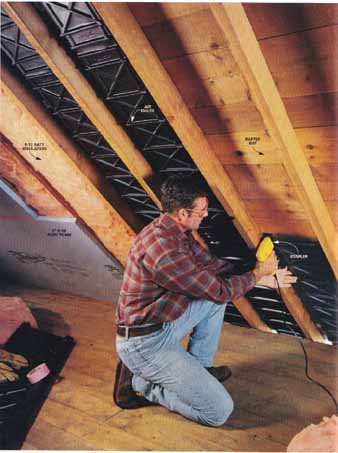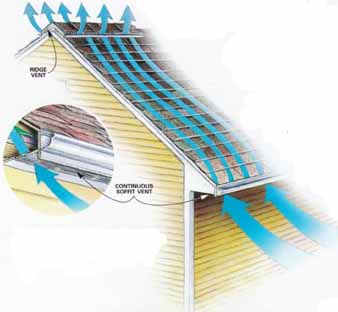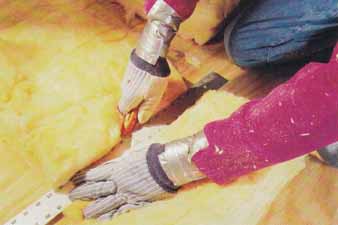|
If you need to insulate and ventilate your attic but don’t want to lose headroom, use a combination of dense batt insulation, rigid foam sheeting and air chutes.

Insulating a finished attic is the best way to save energy and headroom.
Most codes require a specified minimum amount of headroom, and it’s tough to meet this requirement when insulating a finished attic, especially since most codes require insulation equal to R-38 or more. However, most inspectors we’ve spoken with will lower the insulation requirement if it means that the finished space won’t other wise have the required headroom. To get the most R-value with the least thickness, use batt insulation with a higher R value per inch in combination with rigid foam insulation.

Air enters the soffit vents, travels along the underside
of the roof boards, then exits through the ridge vents to maintain
a “healthy” roof.
Rigid foam sheeting has an R-value ranging from R-5 to R-10 per inch of thickness. This means you can have a combined R-value ranging from R-23 to R-31 with only A 5-1/2 in. of combined fiberglass and foam insulation.
To effectively ventilate your roof, create a 1-in, airspace from the soffit to the ridge by installing a continuous air chute in each rafter bay. To install the air chutes, staple them directly to the roof decking.
Air chutes, when combined with soffit vents and a ridge vent, will help prevent problems with condensation and ice dams. They come in 4-ft. lengths and 14-1/2 and 22-1/2-in, widths. They’re readily available at home centers and cost 75 to $2 apiece. (Air chutes work only when the rafter spaces run from the soffit to the ridge. This method won’t work where rafter spaces stop short, such as in a valley or in the corner of a hip roof.)

HINT: Duct tape wristbands! When you’re working with
fiberglass insulation, tape the cuffs of your long-sleeve shirts to
gloves with duct tape. It’ll keep the glass fibers from getting under
sleeves and irritating your skin. Your wrists will thank you.
Next: Sealing attic air leaks